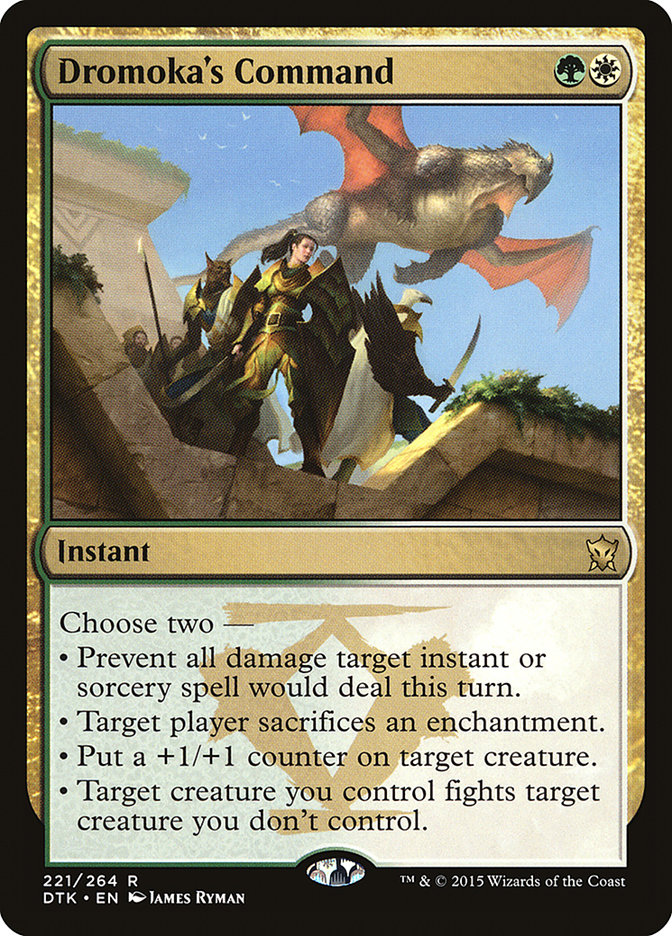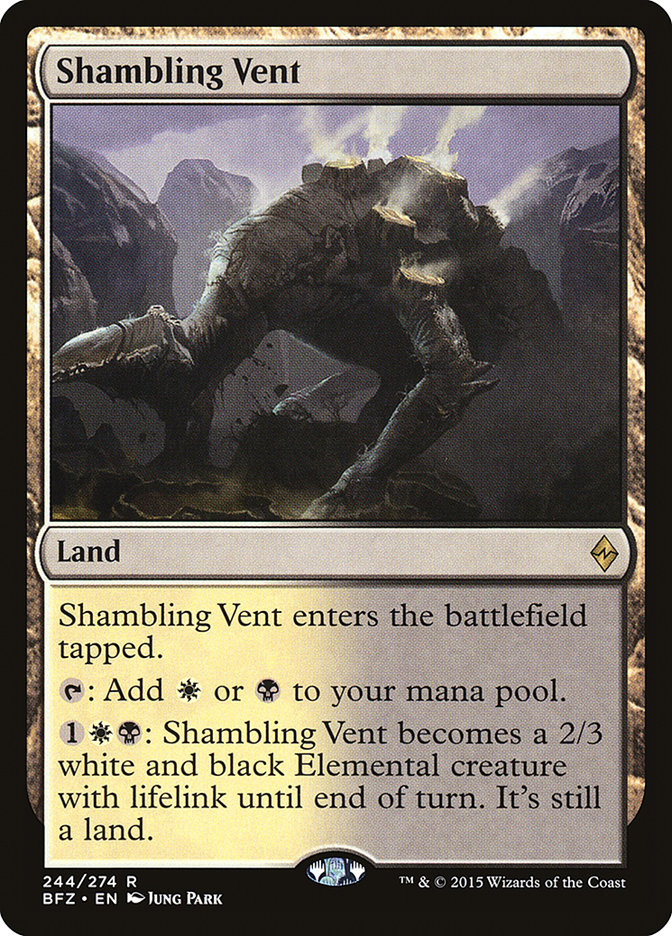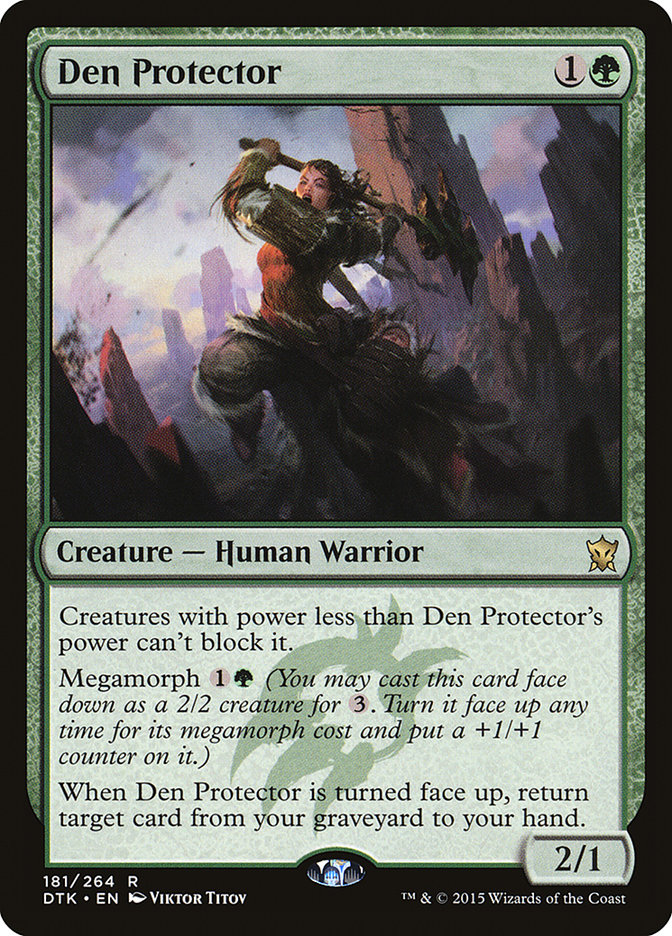Had you talked to me a few weeks ago I would have told you that I was attending #GPAtlanta, especially after a disappointing finish in Indianapolis left me
with only my Silver invite for the next Pro Tour. But the race for #SCGPC has ramped up significantly in this last quarter, and the lead I built in
September had largely disappeared after I only earned four points at #SCGPHILLY.
So I had a decision to make: I could give up on the Players’ Championship and put all my efforts into gaining pro points for the season, or put the latter
on hold until the new year and concentrate on gaining Open Series Points.
The deciding factor in my decision was how awesome last year’s Players’ Championship was. Between the intimate setting, the high drama, and intense
competition, it was among the most memorable tournaments I have ever played. Unfortunately, my run in last year’s inaugural event did not end the way I had
hoped, even if throwing a Progenitus across the room is something I had always wanted to do. I have a score to settle. Pro Tour glory will have to wait a
couple months.
So there I was, playing local events and fielding plenty of questions as to why I was not in Atlanta. Over the weekend, I played Standard twice and Modern
once, and in addition to gaining some valuable Open Series Points, I was able to learn some important lessons that I would like to pass on to you.
First up is Standard, where I played the following relatively stock list:
Creatures (20)
- 4 Anafenza, the Foremost
- 2 Wingmate Roc
- 4 Siege Rhino
- 4 Warden of the First Tree
- 3 Den Protector
- 3 Snapping Gnarlid
Planeswalkers (4)
Lands (26)
Spells (10)

My first priority in building this list was the mirror. Between Abzan Charm, Anafenza, the Foremost, and the need to curve out with big creatures,
Hangarback Walker is a liability there and not particularly impressive elsewhere. Snapping Gnarlid plays a lot like Fleecemane Lion, consistently a 3/3
with the bonus of being a 4/4. While Gnarlid does not get the full upgrade to hexproof and indestructible, it also does not demand any mana investment once
on the battlefield and you can at times keep fetchlands on the battlefield to make Gnarlid even bigger if you need to attack through Siege Rhino or
Tasigur, the Golden Fang. In a deck that is all about applying early pressure with big creatures, Snapping Gnarlid just makes sense.
The other advantage of cutting Hangarback Walker is that you no longer have a creature that becomes blank under Silkwrap except creature tokens made by
Gideon or Sorin. This means your Dromoka’s Commands are significantly better, as you can more reliably use the sacrifice an enchantment mode to good
effect. Anytime your Command can destroy an opposing creature while bringing one of your own back onto the battlefield, it is a huge blowout–kind of like
catching a ball in dodgeball.
Am I the only one who thinks that movie is highly underrated among comedies from the last decade?
Over the course of eleven rounds and two tournaments, I played the mirror five times, and Snapping Gnarlid certainly impressed. Unlike Warden or
Hangarback, Sir Gnarls frequently Commands down an Anafenza or a Rhino, which gives you some great double spell turns. Getting ahead early is much more
important in the mirror than grinding out small bits of value, so having the bigger creature is huge, and you really don’t give up much in other matchups.
Everyone is prepared to deal with Hangarback Walker right now, and while I expect that to change as people play fewer Walkers, I am happy with Gnarlid for
now.
The primary downside to cutting Hangarback Walker to me is being more vulnerable to Wrath effects, so Esper Control is more worrisome. As such, I built my
sideboard with that deck in mind, supplementing the typical discard spells with a Mastery of the Unseen and a Painful Truths, the latter of which could
also come in midrange mirrors provided the games came down to attrition often enough. Unfortunately (or fortunately depending on how you look at it), I did
not come across a single control deck over the weekend. However, with the resurgence of Esper Dragons at Grand Prix Brussels, I will continue to keep that deck in mind
for future tournaments.
Shambling Vents is the Truth
I talked a lot last week about Shambling Vents being the key addition to
Abzan Aggro between the beginning of the format and the Pro Tour, or more specifically the addition of Vents to the fetchland + Battle land manabase. Last
weekend was my first chance to see the card work in a tournament setting, and I could not have been more impressed.
Shambling Vents slices. It dices. It chops. It juliennes. I’m pretty sure it will make your entire Thanksgiving meal and then tuck you in for a long nap
after you eat way too much.
I must have activated Shambling Vents thirty times over the weekend. Between Anafenza, Gideon, Dromoka’s Command, and Abzan Charm, you have plenty of ways
to pump it and take advantage of lifelink, and fighting with a Command is especially sweet. The insulation against flooding is incredible, especially
because Vents does so in a way that applies pressure to end games quickly.
The added creature also makes threatening planeswalkers easier, which is quite relevant in a field replete with Gideons. This is an advantage that you may
not see at first because often your opponent will just not play their planeswalker when it is going to die, but not being afraid of opposing ‘walkers also
opens up more lines of play to you, which is always appreciated. I made these points last week, and I certainly expected good things from Shambling Vents,
but all such expectations were exceeded.
I had some spectators laughing during one of my games when I made my third Gideon emblem and then attacked with two Vents along with several other
creatures for well more than lethal damage.
Lesson: Shambling Vents is basically Baneslayer Angel.
Den Protector is the False?
Is that even a phrase? Should it be falsehood? I don’t think it matters. Den Protector was my least favorite card in the deck. It is still a great draw in
the mid-lategame but is rarely a card you want to see early on. Every other card in the deck gives you the most possible immediate impact on the game for
its mana cost, and Den Protector is a mopey Grey Ogre that you have to hope lives for a turn.
Spoiler Alert: It never lives.
Honestly, the times Den Protector is most impressive outside of topdecking it on turn 10 are when you play it on turn 2 in the absence of another early
play. No one really respects the 2/1, and you can often get in for six or more damage as your opponent worries about your other cards before they realize
they are at six. I see plenty of local players who are too proud to run it out on turn 2, and I am always impressed when I see those who have the
discipline to realize that their aggro deck needs to beat down; sometimes sacrifices must be made.
The next time I play Abzan, this card is certain to be cut to two copies, and that number could further reduce if I find a suitable replacement.
Assorted Notes
– I tried out a Valorous Stance because I wanted something to kill bigger creatures in the mirror and had this strange notion that it would occasionally
counter opposing removal spells. It looked silly every time I drew it and only stayed in against the mirror. It should have been a Silkwrap.
– Multiple of my opponents in the mirror brought in Transgress the Mind and/or Duress. While hitting opposing Gideons or Wingmate Rocs is tempting, the
mirror is almost always decided by who starts faster and who maintains battlefield advantage. Taking a turn off to take a threat of theirs when they will
often have something else to do is not a winning proposition.
– Four Battle lands might be one too many given you only play four basic lands, so I am not sold on the second copy of Canopy Vista. As good as Shambling
Vents is, you need to curve out consistently, and having lands entering the battlefield tapped makes that difficult.
– With such a strong showing for Four-Color Rally at #GPBrussels, I have to imagine that Anafenza is not enough to swing that matchup. I will be making
room for some copies of Hallowed Moonlight for this weekend since the card is also great against Secure the Wastes decks.
And Now Jund
The Super IQ on Sunday was Modern, which gave me another opportunity to figure out why people like midrange decks so much. While I came away with a solid
finish after losing the finals to some abysmal draws–let’s just say it’s hard to Abrupt Decay Deceiver Exarch on one land–I came away entirely
dissatisfied with my deck.
I played the same list I wrote about here, only
swapping the Engineered Explosives in the sideboard for an Anger of the Gods because one of the better local players plays Kiki-Chord. I’m not even sold
Anger is good in the matchup because the deck plays Courser of Kruphix and Restoration Angel, but from years of playing Pod, I know that taking out their
mana creatures and Voice of Resurgences is important.
After thinking about why I came away with such a negative impression, I believe I figured out the source of my dissatisfaction, and it comes down to an
issue with the Modern format as a whole.
Modern is an incredibly powerful format. There is a wide range of decks and they are all capable of winning a tournament because they almost all have a set
of draws that is nigh unbeatable. This wide swath of powerful, proactive decks is also why reactive decks have never performed well in the format-there is
too much to prepare for.
Unfortunately, when this power level is combined with the speed of Modern, you have a situation where too many games are determined by the top ten or so
cards in each player’s library. And in a format where there is little good card manipulation, those ten cards have high variability. As such, Modern is the
format where you feel helpless more often than any other.
This sort of helplessness happens less often in Legacy despite the presence of decks that kill on turns 1 or 2 because of Force of Will and Brainstorm.
These cards let you insulate yourself from powerful, proactive decks and smooth your draws, even as early as turn 1 so you are not victimized by poor
opening hands as often.
Cards like Thoughtseize and Remand try to fill in for Force of Will as the generic answers to powerful proactive strategies, but they are not as universal.
Discard misses against the top of your opponent’s deck, and Remand interacts poorly against decks full of cheap spells. The discard spells are also
tempo-negative (you spend one mana to your opponent’s zero to force an even trade of cards), which can be a liability against decks like Zoo and Elves that
develop their battlefield very quickly.
Now this does not mean that Modern is a bad format in any objective sense, even if it is much maligned. With the increased importance placed on the
strength of your opening hand comes an increased importance on mulligan decisions, and in particular with the Vancouver mulligan becoming standard, you
should be mulliganing aggressively. Jund may be the exception as an attrition deck, but you still want to start strong, ideally with a discard spell on
turn 1 followed by either Tarmogoyf or Dark Confidant. I certainly kept a few loose hands (four lands, Lightning Bolt, Abrupt Decay, Terminate on the draw)
that I could have sent back.
As our esteemed CEDitor likes to remind us, you don’t have to mulligan; you get to mulligan.
You can also take advantage of this aspect of Modern with a couple deckbuilding decisions. The first is lowering your curve. It is easy to remember the
time that Keranos, God of Storms took over the game while neglecting the times it sat in your hand while your opponent ran you over. If you need to
interact early, then play the cheapest forms of interaction. Is it any wonder why Lightning Bolt, Inquisition of Kozilek, Path to Exile, and Spell Snare
are so popular?
This also means cutting down on the more expensive spells. In Jund that means Maelstrom Pulse and Kolaghan’s Command. Most lists I see play two copies of
each, where I would prefer to play only one. Playing cheaper spells not only means you can interact more consistently on earlier turns but it also lets you
play multiple spells in a turn earlier, which is important for turning the corner if your opponent comes out quickly or you are on the draw. Your curve is
important, even if you are not playing an aggro deck.
The other deckbuilding change you can make is adding more lands. This may seem counterintuitive with lowering your curve, but as games become more
condensed, the risk of flood is diminished, while the punishment for a missed land drop is greatly increased. In these condensed games, you only have
enough time to play so many spells-the rest will just rot in your hand. The best thing you can do is ensure you have the maximum amount of mana to work
with so every spell can be utilized as early as possible.
With these lessons in mind, I am actually excited to pick up Jund again, which for me is a little unnerving. I’ve never been Jund Guy before, and for the
most part, I have been proud of that fact. But change is inevitable. And boy do I enjoy triggering Dark Confidant.






